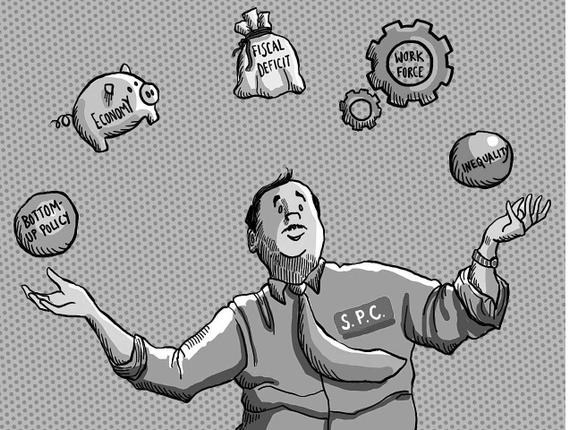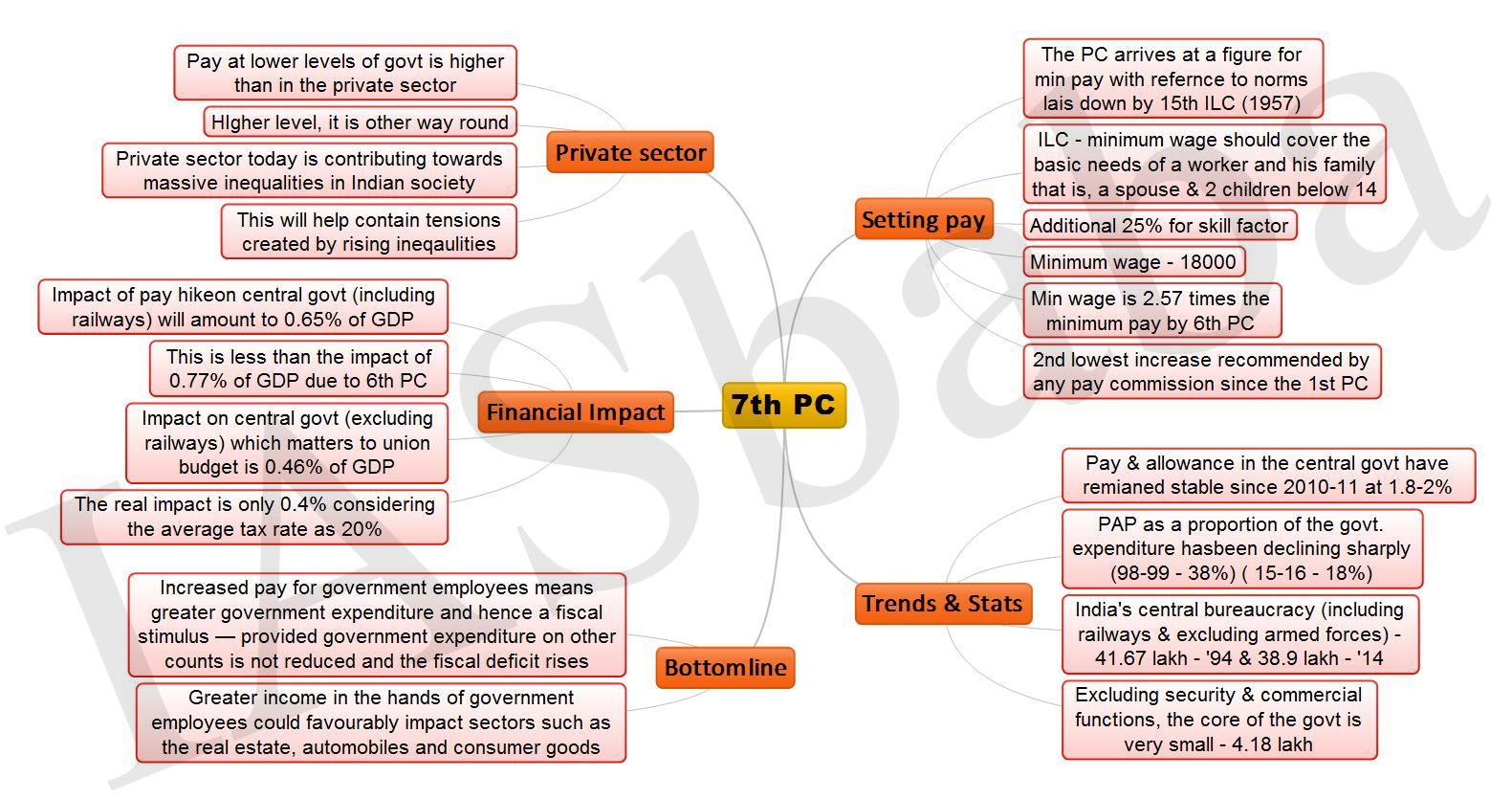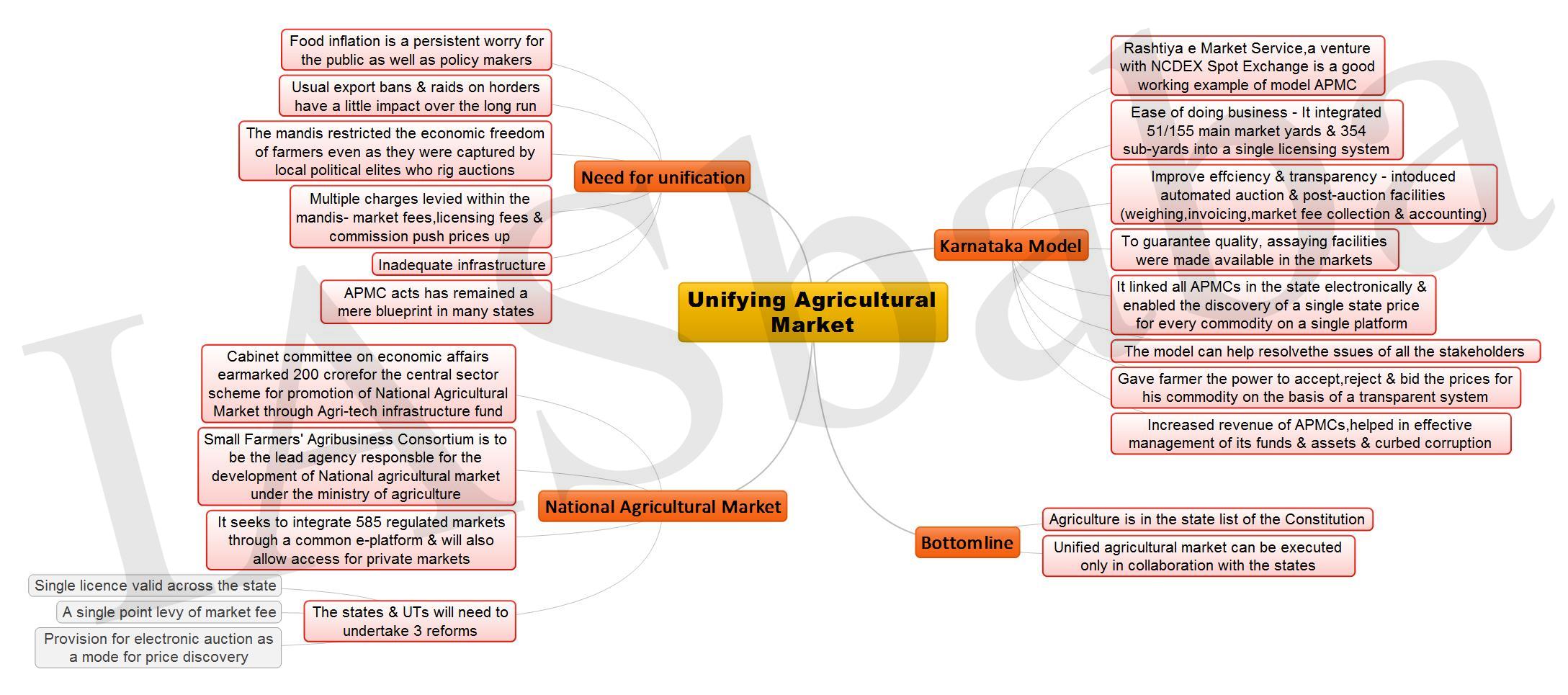IASbaba's Daily Current Affairs Analysis, IASbaba's Daily Current Affairs November 2015, National, UPSC
Archives
IASbaba’s Daily Current Affairs – 24th November, 2015
NATIONAL
TOPIC: General Studies 2
- Role of civil services in a democracy.
- Structure, organization and functioning of the Executive and Ministries and Departments of the Government; Important aspects of governance.
7th Pay Commission: Why we must not grudge them a pay hike?
- In today’s climate of liberalisation, the socialist government is viewed with
 hostility.
hostility. - The present government is facing criticisms from the media and public at large, over the increases in pay for Central government employees recommended by the Seventh Pay Commission (SPC).
Why is the hike by SPC criticised?
The analysts believe that the hike would affect the fiscal deficit negatively, a possible boost to inflation and a setback to public investment.
Is the criticism valid?
How the does the pay commission come out with the figures?
- The Commission has a rigorous basis for setting pay in government.
- It arrives at a figure for minimum pay in government with reference to norms laid down by the 15th Indian Labour Conference (ILC) in 1957.
- The ILC had said that the minimum wage should cover the basic needs of a worker and his family, that is, a spouse, and two children who are below the age of 14.
Has SPC followed the guidelines given by 15th ILC?
- The SPC has spelt out the norms it has used for determining basic needs.
- It has gone by food requirements specified by a well-known nutritionist.
- To this are added provisions for clothing, fuel and lighting, education, recreation, festivities, medical expenses, and housing.
- There is an addition of 25 per cent to the total of the above to provide for the skill factor (the basic needs having been determined for an unskilled person).
- The SPC report provides detailed computations for each of these items.
- No reasonable person can accuse the SPC of being overgenerous.
Comparing SPC hike with sixth pay commission hike:
- Based on above norms, the SPC arrives at a minimum wage of Rs. 18,000 for a government employee.
- This is 2.57 times the minimum pay in the Sixth Pay Commission.
- The increase over the projected pay on the current basis as of January 1, 2016 is 14.3 per cent.
- This is the second lowest increase recommended by any Pay Commission since the first one, and it is way below the 54 per cent increase following the last one.
Comparing pay in government and private sector:
- As before, pay at the lower levels of government is higher than in the private sector and at the top, the position is reversed.
- Pay in the private sector today is contributing towards massive inequalities in Indian society. Having a very different structure in government is a useful corrective to trends in the private sector.
- It will help contain tensions created by rising inequality.
Impact on government finances:
So far as the impact on government finances is concerned, the SPC numbers provide a stream of good news.
- The impact of the pay hike on the Central government (including the railways) will amount to 0.65 per cent of GDP. This is less than the impact of 0.77 per cent of GDP on account of the Sixth Pay Commission.
- The impact on the Central government (excluding Railways), which is what matters when it comes to the Union budget, is 0.46 per cent of GDP. As some of the increase in salary comes back to the government as taxes, the impact, net of taxes, will be even less say, 0.4 per cent of GDP (assuming an average tax rate of around 20 per cent on government pay).
Bad news for the military personnel:
Why?
A look into the history:
Start at the beginning. There were two main categories of central government employees: the “All India Services” – the IAS, IFS, IPS, IFoS and the military.
The second is Organised Group “A” Services – Customs & Excise, Railways, Border Roads Organisation, Indian Ordnance Factory Service, and a host of others.
- The 3rd Central Pay Commission(CPC), which was convened in 1970 (and the first without a military member), formally granted the IAS and IFS superiority over all other services.
- In justification it argued that “an IAS officer gets an unequalled opportunity of living and working among the people, participating in planning and implementation of developmental programmes, working with the Panchayati Raj institutions, coordinating the activities of government departments in the district and dealing directly with problems of law and order.”
- Given this responsibility, the IAS and IFS were granted an extra increment over other services.
The SPC bombshell recommendation is that to elevate IPS and IFoS in match with IAS and IFS leaving behind the military.
How far this move by SPC be justified?
Way Forward:
- At the time of the Sixth Pay Commission higher wages for government employees contributed to a higher fiscal deficit.
- This time round, the Finance Ministry insists that it will stick to its fiscal deficit target for 2016-17 after providing for the SPC pay hike. If it does so, the pay hike will not lead to greater loss for the government exchequer.
- However, greater income in the hands of government employees could favourably impact sectors such as the real estate, automobiles and consumer goods.
Connecting the dots:
- Critically evaluate the recommendations of Seventh Pay Commission.
- Critically examine the reasons for setting up pay commissions by successive governments over the years.
ENVIRONMENT
TOPIC:
- General Studies 3: Conservation, environmental pollution and degradation, environmental impact assessment.
- General Studies 2: Bilateral, regional and global groupings and agreements involving India and/or affecting India’s interests.
- Effect of policies and politics of developed and developing countries on India’s interest
India’s Carbon Caution in Paris
Fifth Assessment Report (AR5):
- There is only a specific cumulative amount of greenhouse gases that humanity can emit into the atmosphere, to keep the rise in global average temperature below a specified level, for a given level of uncertainty.
- Cumulative amount = Amount emitted in the past + Being emitted at present + Amount that will be emitted in the future
- Amount left for the future has been presented as a set of two different probabilities: For a less than 33 per cent chance of a global temperature increase of 2{+o}C, the cumulative emissions between 2011 and 2100 of carbon dioxide specifically must stay below 1,000 billion tonnes. For a less than 50 per cent chance of crossing 2{+o}C, the corresponding figure is 1,300 billion tonnes
- Therefore, the room for flexibility barely exists.
Intended Nationally Determined Contributions (INDCs)
- Under the U.N. Framework Convention on Climate Change (UNFCCC), countries across the globe, committed to create a new international climate agreement by the conclusion of the Paris Climate Summit in December 2015, by publicly outlining the actions they intend to take, to counter climate change from their end.
- Estimated Emission: The total carbon dioxide emissions expected after the reduction from these commitments amounts to 750 billion tonnes until 2030 i.e., if the budget for the future is 1,000 billion tonnes for the next 80 years, 75 per cent would be consumed in only the first 15.
- India’s INDSCs:
- Maintains ambition in emissions intensity reduction (35% should be achievable) but balances it with the significant need for adaptation
- Expanded its already aggressive renewable energy and non-fossil energy targets (four – fold increase in absolute terms)
- Call for global technology partnerships, particularly on clean coal and energy storage that should be inclusive in membership, targeted for outcomes and innovative in terms of co-development and co-ownership of intellectual property
Geopolitics of Climate Change
Developed Countries:
- Biggest emitters of CO2
- Come under the Common but Differentiated principle (CBDR)- Possesses a larger responsibility for responsible action to allow developing countries to:
- Improve energy access
- Grow economically and sustainably
Developing Countries:
- Possesses poor technologiesà Burning of fuel inefficiently
- Blamed for climate impacts and pushed for tougher climate action
- Eg: United Nations Environment Programme (UNEP) report in 2002 highlighted about “Asian brown cloud” (Conspiracy to shift blames; later termed as ‘Atmospheric Brown Cloud’)
- Pollutants and particles from biomass burning and industrial emissions had formed a three-kilometre-thick brownish layer over many regions in Asia
- Pollution build-up and disruption in rainfall and wind pattern
- 10 per cent reduction in solar energy causing a corresponding decrease in the evaporation of moisture that controls summer rainfall
Issues
No new commitments:
- To reduce emissions in the pre-2020 period
- No transfer of Technology
- Burden of tackling Climate Change: Shifted on developing countries
Emission Reduction Targets:
- Not defined clearly
- Will lead to abrupt patterns of rainfall and drought
- Agriculture & livelihood of people will suffer
- More poverty traps & difficulty in eradication of the sameà Stand to lose developmental gains
- Limited Carbon Space
- Will get exhausted if used at the present rate by countries like USA and China
- Post 2030, if it continues, developing countries might not get enough time to leverage their economic standing and might have to go for emergency cutting of emissions
- Widened the Trust-gap
CBDR Diluted:
- Licence to evade from responsibilities leading to shift of the entire burden on developing countries
- No decision on:
- Means of Implementation
- Technology
- Finance
- Capacity Building Support
India’s Caution
Speak up India:
- Stake a claim on a fair and reasonable share of the global carbon budget
- Confront the perception in the West w.r.t India and the perceived demand for coal without restrictions as the developing countries need to take care of their emissions and the caps on them for subsistence and considerable well-being as well
- The concept of ‘Equity’ needs to be put to work in a true operational manner and not just in speeches, talks and documents. Common, but differentiated, responsibilities on a continuous scale of differentiation will provide a good benchmark for negotiations and will provide scope to India as well as other developing countries to accept and engage with further negotiations
Steps to be taken to plug the loopholes?
- Enhance the implementation of the UN Framework Convention
- Clear Greenhouse Gas Reduction Pathway to achieve the target
- Purpose should be identified:
- Increase Resilience + Capacity Building
- Reduce Vulnerabilities
- Include clear obligations on Mitigation:
- Prepare + Communicate + Maintain + Implement + Fulfil nationally determined commitments
- 5-yearly successive mitigation commitments
- Process to access proposed targets & level of implementation (+ Leadership)
- Adaptation: Planning + Guaranteed matching support + Proper International mechanism to address loss and damage
- Guaranteed support for technology development + Technology Executive Committee to take care of it
- Enhanced and Robust Transparency & Accountability System
- Compliance Mechanism: To prevent non-compliance + Enforce & facilitate commitments
Connecting the Dots:
- ‘Risk is a function of time, impacts and probability’. Critically comment on the statement and suggest ways ahead to walk past the short-sightedness w.r.t the issue of climate change and negotiations related to it.
- Can steps taken towards climate geoengineering pose another scope for the ever-rising tension and conflict amongst countries in the world? Discuss
MUST READ
The India Story, in word & deed
Pressing for free speech
How the Valley is changing
Are users hungry enough for NFC? The grand NFC dream envisions a world where you need no credit cards, no loyalty cards, no physical train passes or bus tickets
How automation could impact Make in India- Given the rapid changes happening in manufacturing, we should be cognizant that manufacturing by itself is no panacea for our challenges of economic and job market growth
Summit subtext- India must not opt out of emerging trade regime
Dented confidence: The ‘trust’ element in PPPs-The exit of National Skill Development Corporation CEO, and the circumstances leading to it, has led to a trust deficit in India Inc.
A new community- For India, a unified Southeast Asian market represents special opportunities — and challenges.
Dissent and democracy- Within a government, ministers are expected to convey opinions on policy proposals. A second channel is through public representatives (the members of Parliament)
MIND MAPS
1. 7th Pay Commission – Hindu

2. Unifying Agricultural Market – Live Mint














